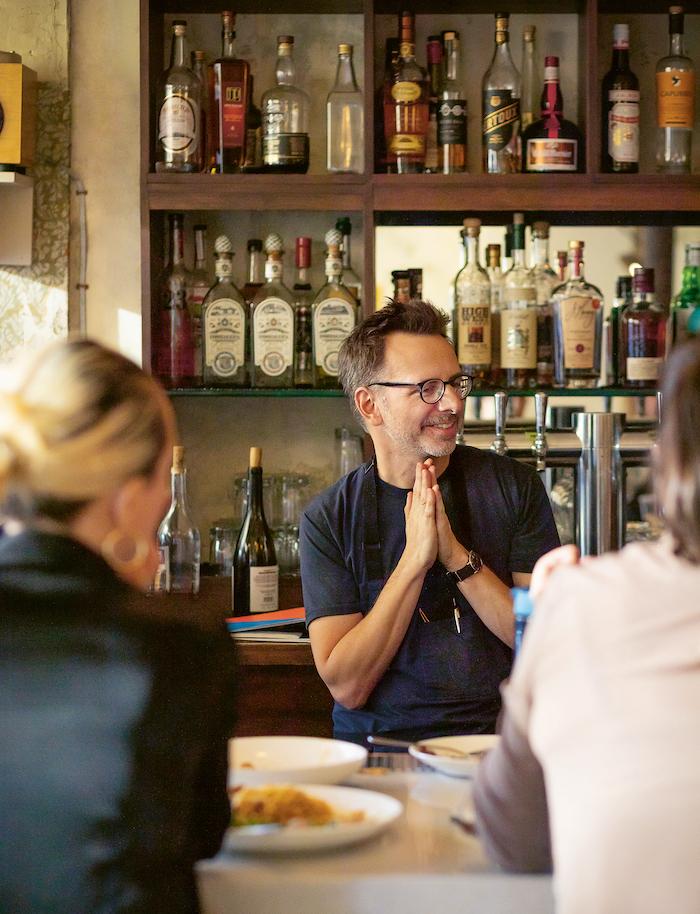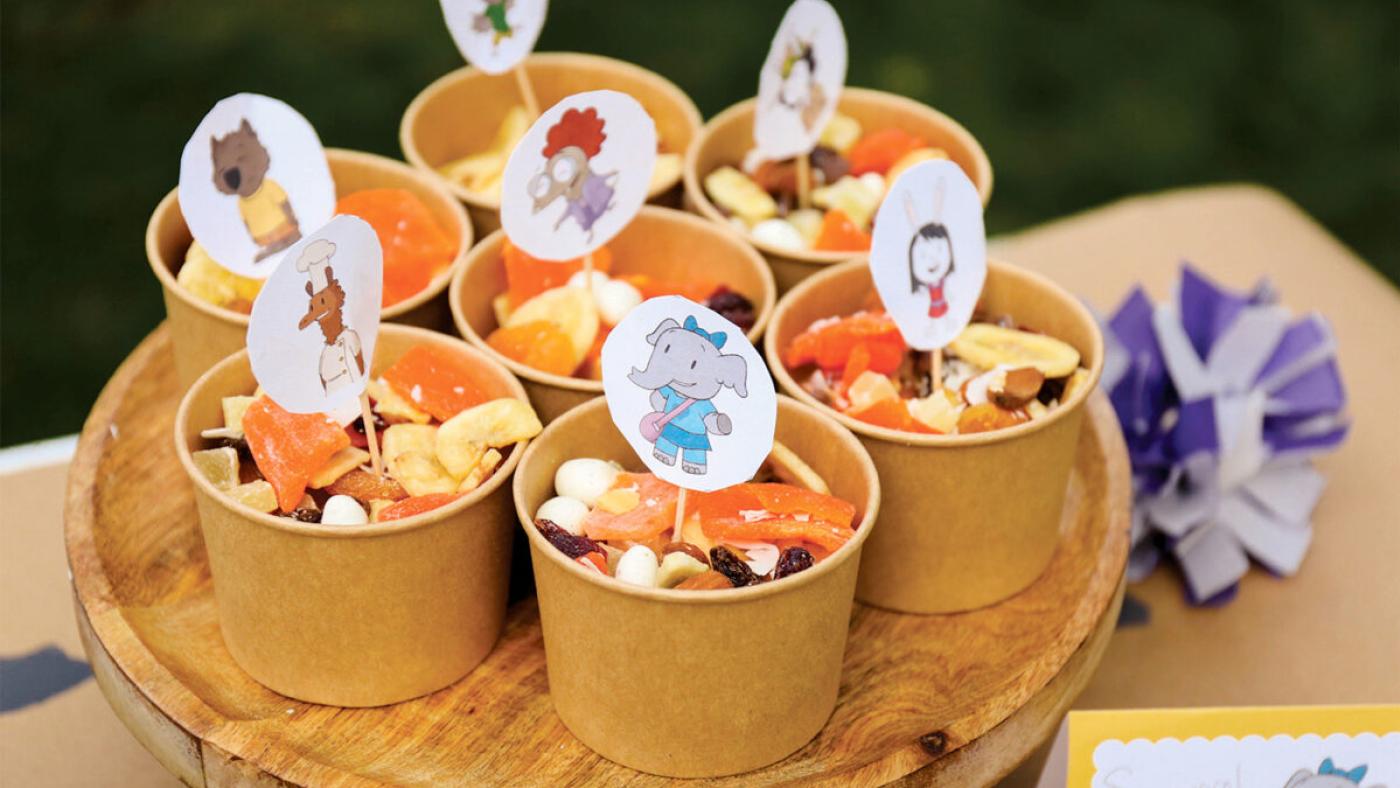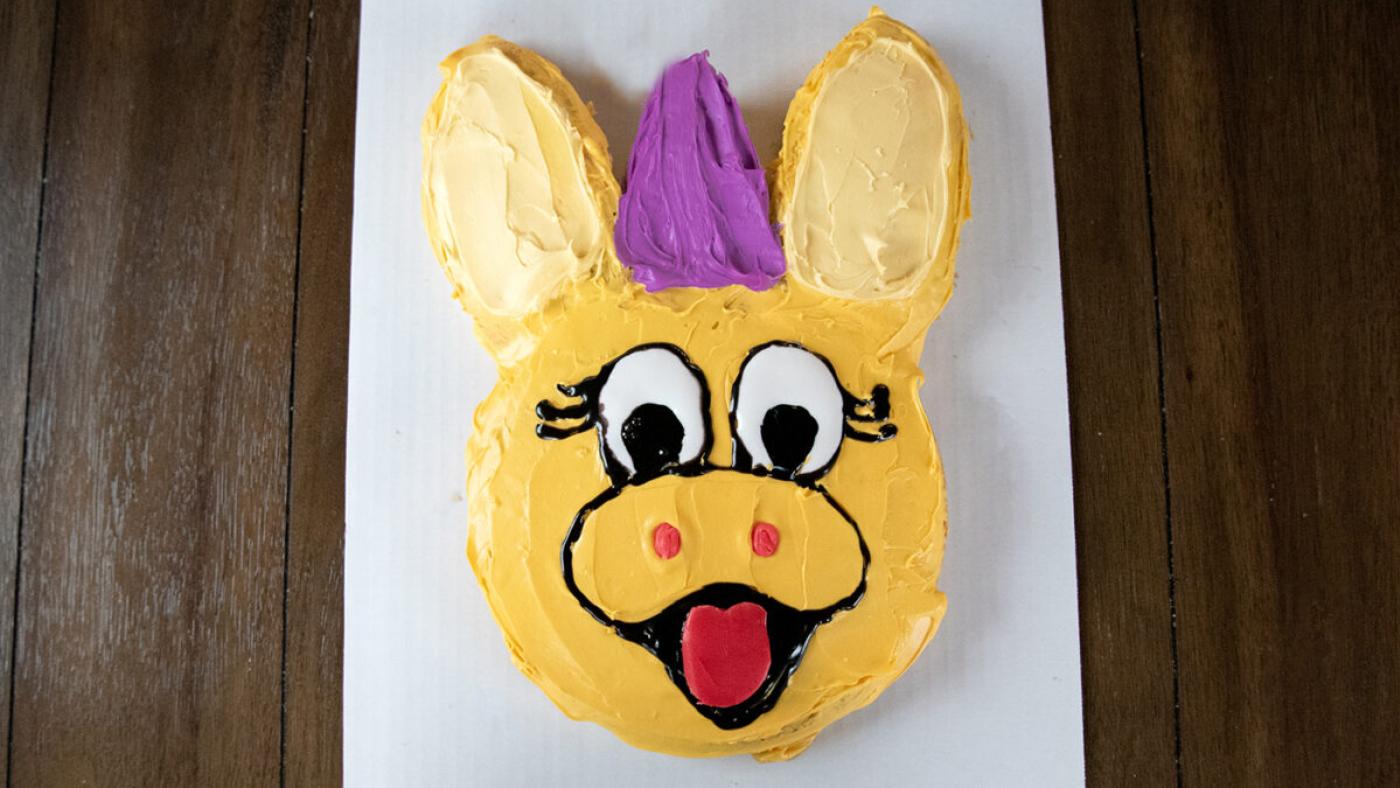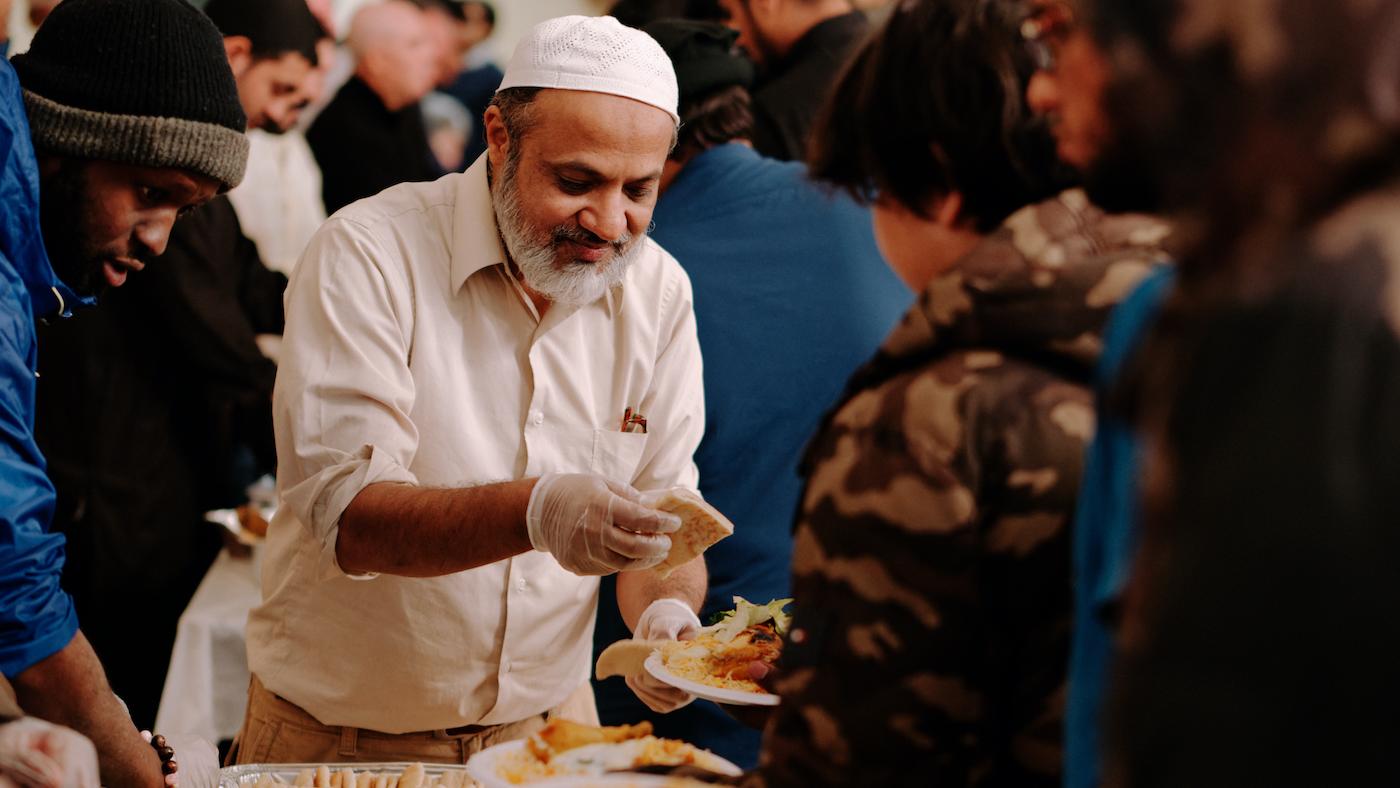Make the Soup That Started Everything for Chicago's Beloved, Stalwart Lula Cafe
Daniel Hautzinger
October 3, 2023

Get more recipes, food news, and stories by signing up for our Deep Dish newsletter.
It all began with a bowl of soup. On the day that he moved to Chicago, Jason Hammel first tasted his now-wife’s cooking in the space that they would eventually turn into the cherished restaurant Lula Cafe. It was a bowl of sweet and sour cabbage soup, noted as “Lea’s Amazing Soup” on the board of the Logan Beach coffee shop, a place recommended to him by a friend that led him to rent in Logan Square in the first place.
In his new The Lula Cafe Cookbook: Collected Recipes and Stories (out October 4), Hammel writes that he wishes he had noted what day it was, because he was “about to meet the Lea I would one day marry, minutes away from tasting a soup that would change my life.” He was dating another Lea at the time, but eventually met the Lea—Amalea Tshilds—who made that wondrous soup at Logan Beach.
He went into business with her selling soup to coffee shops, started Lula in Logan Beach’s space, turned it into one of Chicago’s favorite restaurants, helped bring intensely seasonal cooking to the city, made thousands of unique dishes on a never-repeated weekly farm dinner, got married, had children, and now, finally, wrote a book, 24 years after the restaurant opened.
Over the years, Hammel became the face of the restaurant, but Tshilds is still an essential influence. “Lea is a really important part of the food at Lula because of all the recipes and the work we did together to create the restaurant,” Hammel says. “She’s very much the soul and root of what we do.”
When Hammel met her, Tshilds was serving regular Indonesian meals at Logan Beach, and the sweet and sour cabbage soup shows Indonesian influence in its use of sambal oelek and kecap manis—impressive for the late 1990s, given that Chicago doesn’t have a brick-and-mortar Indonesian restaurant in 2023. (Try the recipe below.) The soup, and a few other dishes from Logan Beach, would open Lula’s menu.
Indonesian influence wasn’t the only way Lula was in the vanguard: it was also intensely seasonal, focused on the produce-forward cuisine that Alice Waters and others had popularized as a new style of American cooking in California.
 Jason Hammel, Lula Cafe. Photography: Carolina Rodriguez“We believed in fifty-two seasons, not four,” Hammel writes. A 2001 New York Times article lauded Chicago as a new center of this approach, calling the city “a cradle of the first truly adult American cooking” and naming Lula as one of the restaurants exemplifying it. All the other featured spots were high-end joints; Lula is the only one still around. It only started taking reservations in 2011 and was first reviewed in the Chicago Tribune in 2016.
Jason Hammel, Lula Cafe. Photography: Carolina Rodriguez“We believed in fifty-two seasons, not four,” Hammel writes. A 2001 New York Times article lauded Chicago as a new center of this approach, calling the city “a cradle of the first truly adult American cooking” and naming Lula as one of the restaurants exemplifying it. All the other featured spots were high-end joints; Lula is the only one still around. It only started taking reservations in 2011 and was first reviewed in the Chicago Tribune in 2016.
The stalwart Lula also helped lead the way for independent restaurants in Logan Square. A 2013 Chicago Reader piece featured the veteran chefs Matthias Merges and Jeff Mauro praising Hammel and Tshilds as a model for their own places in the neighborhood. Mauro’s restaurant, Jam, has since closed, as has Merges’ Yusho. (His Billy Sunday bar is still there.)
“I don’t want anybody to close their restaurants,” Hammel says. But, “I am proud of the fact that we’re still here. Absolutely.”
In the book, he attributes the restaurant’s longevity to a “democratizing aspect.” He writes, “It’s the way you feel a deep and interstitial network of personal stories as you walk in. A forest of Chicago lives. And then the way you feel like your story belongs here, too.”
There’s the stories of all the regulars and customers—the table in the window at which Hammel first sat at Logan Beach is where Lula seats someone who is going to propose—as well as all of the people that have worked there, many of whom have had their own successes in the industry. Jason Vincent, the “OG sous chef” at Lula, now runs the acclaimed Giant and Chef’s Special. Lula sous chef Ben Lustbader opened Loaf Lounge with his now-wife Sarah Mispagel-Lustbader, whom he met at Hammel and Tshilds’ restaurant Nightwood (that one closed). Some of the people behind Bungalow by Middle Brow are Lula alums, as is Tracy Malecheck-Ezekiel, whose Birdie’s in Austin, Texas was just named Food & Wine’s Restaurant of the Year.
Hammel turned to one of his longtime confidants, Sarah Rinkavage, to test and refine the recipes for the book, which are pulled from Lula’s 24 years. For much of that time, Lula has served a weekly farm dinner featuring fresh produce, never repeating dishes, in a “kind of creative exercise to propel items onto the regular menu,” Hammel says.
So there was a lot to choose from. “I tried to make it dishes that I connected to, dishes around which I had a story to tell,” he says.
Hammel always wanted to be a writer. He came to Illinois from the East Coast to study writing with David Foster Wallace in a graduate program at Illinois State University. He started learning to cook because he was writing a story about women making pasta, and read Marcella Hazan’s Essentials of Classic Italian Cooking as research.
Books continued to be integral even once he opened Lula, as did Tshilds’ assured palate. Hammel learned to butcher on the fly from Jacques Pépin’s La Technique and about seasonality and Asian flavors from Charlie Trotter’s Vegetables—which also led him, sneakily, to Trotter’s produce supplier. Judy Rogers, Thomas Keller, Elizabeth David, Richard Olney—he learned that “there was such a thing as a culinary history that could bend its arc across nations, times, cultures, in the way I understood literary history to bend,” he writes.
Now Lula is part of that history, with a cookbook to inspire others. Hammel is 51, around the age his grandparents were when they first opened a coffee shop. He was 27 when he opened Lula. His grandfather was 103 when he died, and worked until the end.
“Do I have that in me? I don’t know,” he says with a laugh. “Wait 52 years and see how I’m doing.”
Lula Cafe's Sweet and Sour Cabbage Soup
From The Lula Cafe Cookbook: Collected Recipes and Stories; $49.95, phaidon.com
The original Lula soup and the recipe I get asked for the most often. The key ingredient here is kecap manis, a syrupy Indonesian soy sauce sweetened with palm sugar, without which this cabbage soup would lose its unique flavor. We use ABC's medium-sweet soy sauce (kecap manis Sedang), both here and in the recipe for The "Tineka" Sandwich, which were staples from Lea's work in the Logan Beach days in the '90s.
Before we took over the cafe, when we sold soup out of Lea's little car, there was a particular day I remember, in the late summer of '98, when we had ten or twenty samples of this cabbage soup in the back seat. We drove uptown to Lincoln Square, Andersonville, and Rogers Park with the windows down, summer wind picking up the enigmatic scents of ginger, coriander, tomato, and soy. I imagined the sweet aromatics wafting down the city streets, even turning heads. We left samples with disaffected baristas all over town. Let us know what you think! we chirped before heading to the next cafe. When we got in the car to drive back home, O-o-h Child by Five Stairsteps came on the radio and we sang along. The chorus became a kind of anthem for use as we started to work together that year and make plans for Lula. "Things will get brighter soon."
Ingredients
1/4 cup blend oil
6 1/4 oz red onion, finely diced
1 1/4 oz minced ginger
1 1/4 oz minced garlic
1 tbsp sambal oelek
1 1/4 tsps ground coriander
3/4 cup kecap manis
1 lb 2 oz green cabbage, large-diced
1 14 fl oz can crushed tomatoes
1 14 fl oz can coconut milk
2 cups Vegetable Stock
Distilled white vinegar, to taste
Small bunch cilantro (coriander), leaves picked, to garnish
Small handful of chives, sliced, to garnish
Salt
Directions
1. Place a large pot over medium heat, add the oil and heat until shimmering. Add the onion, ginger, garlic, sambal, and coriander and cook over low heat until the onions are translucent and soft, 15-20 minutes.
2. Add the kecap manis and cook for an additional 10 minutes, until reduced by half.
3. Stir in the cabbage, tomatoes, coconut milk, and stock and cook until the cabbage is fork-tender, about 20 minutes.
4. Season with vinegar and satl to taste. Garnish with cilantro (coriander) and chives.







